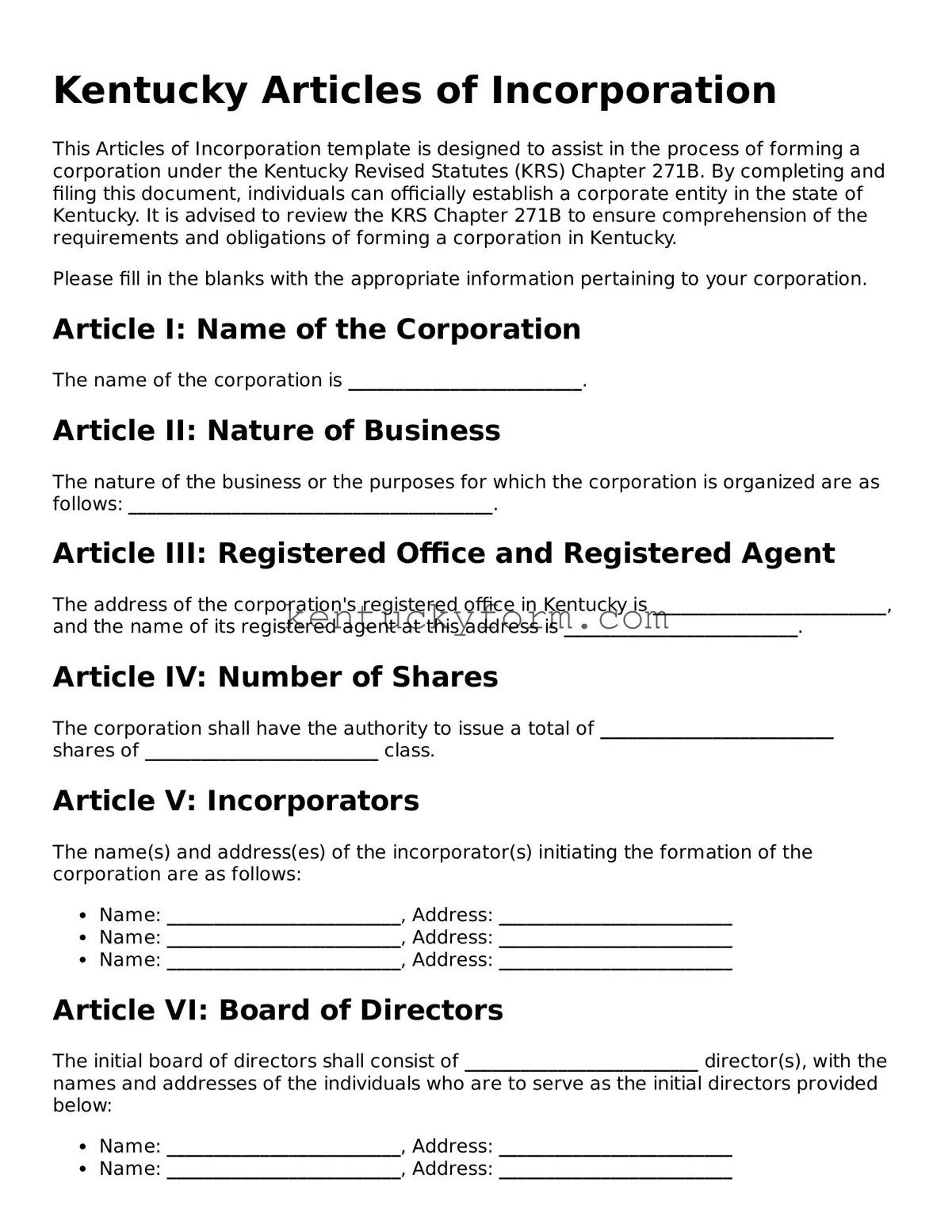The Articles of Incorporation form shares similarities with the Articles of Organization, commonly used by Limited Liability Companies (LLCs). Both documents serve as foundational legal statements that outline basic information about the business, such as name, purpose, and structure, and are submitted to a state's business registry. Each document, though geared toward different types of business entities, marks the legal birth of a corporation or LLC within the state.
Similarly, a DBA (Doing Business As) Filing form resembles the Articles of Incorporation in function. A DBA filing allows a business to operate under a name different from its legal, registered name. This form, akin to the Articles of Incorporation, is filed with a governmental body, often the state or county, and publicly associates the business name with the entity or individual who owns it, helping to ensure transparency and protect consumer interests.
The Corporate Bylaws document also parallels the Articles of Incorporation. While the Articles of Incorporation register the corporation with the state, the Corporate Bylaws outline the internal rules and procedures that govern the corporation's day-to-day operations. This includes provisions on the board of directors, shareholder meetings, and officer roles, crucial for defining the organizational structure and operational guidelines of a corporation.
A Certificate of Incorporation is closely related to the Articles of Incorporation. In some jurisdictions, the terms are used interchangeably, but generally, the Certificate of Incorporation is the official document issued by the state upon the successful filing of the Articles of Incorporation. It serves as proof that the corporation legally exists and has been duly registered with the state.
The Business Plan document, while more comprehensive and detailed in content, shares the objective of outlining a new business's framework and strategy. Like the Articles of Incorporation, a business plan is foundational, though primarily used for strategic, financing, and operational planning rather than for legal registration purposes. It covers aspects like marketing, financial projections, and business objectives, offering a roadmap for the business's future.
Operating Agreements for LLCs echo the role of the Articles of Incorporation for corporations, by detailing the ownership structure, member responsibilities, and operational procedures of the LLC. Although typically not submitted to the state, this internal document is instrumental in clarifying the rules under which the LLC operates, mirroring the structural and governance frameworks outlined in the Articles of Incorporation for corporations.
The Shareholder Agreement is another document that, while distinct, symbolizes agreements similar to those found in corporate bylaws or the operational details sometimes included in the Articles of Incorporation. This agreement among a corporation's shareholders may delineate how the company is run, articulate shareholder rights and responsibilities, and prescribe the handling of shares. It strengthens the corporate governance framework by adding another layer of detail and agreement on operations and management.
State-specific Business Registration forms, required for operational authorization in various jurisdictions, have a comparable purpose to the Articles of Incorporation. These forms notify the state of a business's intent to operate, detailing similar foundational information such as business name, address, and type of business activity. Although these forms vary by state and business type, the core objective of establishing a business's legal presence is shared with the Articles of Incorporation.
The Nonprofit Articles of Incorporation, specifically tailored for nonprofit organizations, mirror the conventional Articles of Incorporation but include additional information pertinent to nonprofits, such as the organization's mission, how it will handle assets upon dissolution, and statements necessary to achieve tax-exempt status. Both establish a legal entity but are tailored to the unique needs and goals of for-profit and nonprofit organizations, respectively.
Finally, the Trademark Application form, though primarily concerned with the protection of a business's brand rather than its legal formation, shares an underlying connection with the Articles of Incorporation. Both involve state or federal filing processes that publicize elements of a business's identity, ensuring public record and legal recognition, be it for the corporation's foundational existence or its exclusive branding elements.
